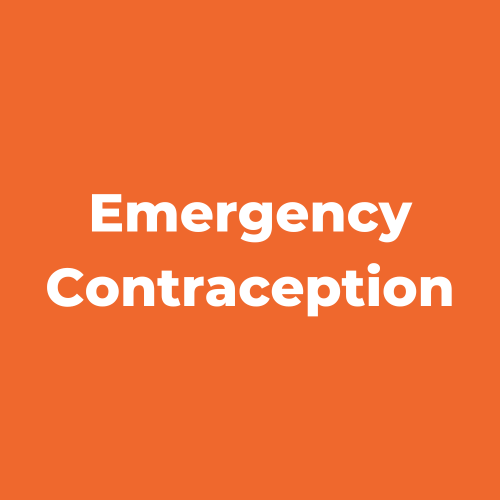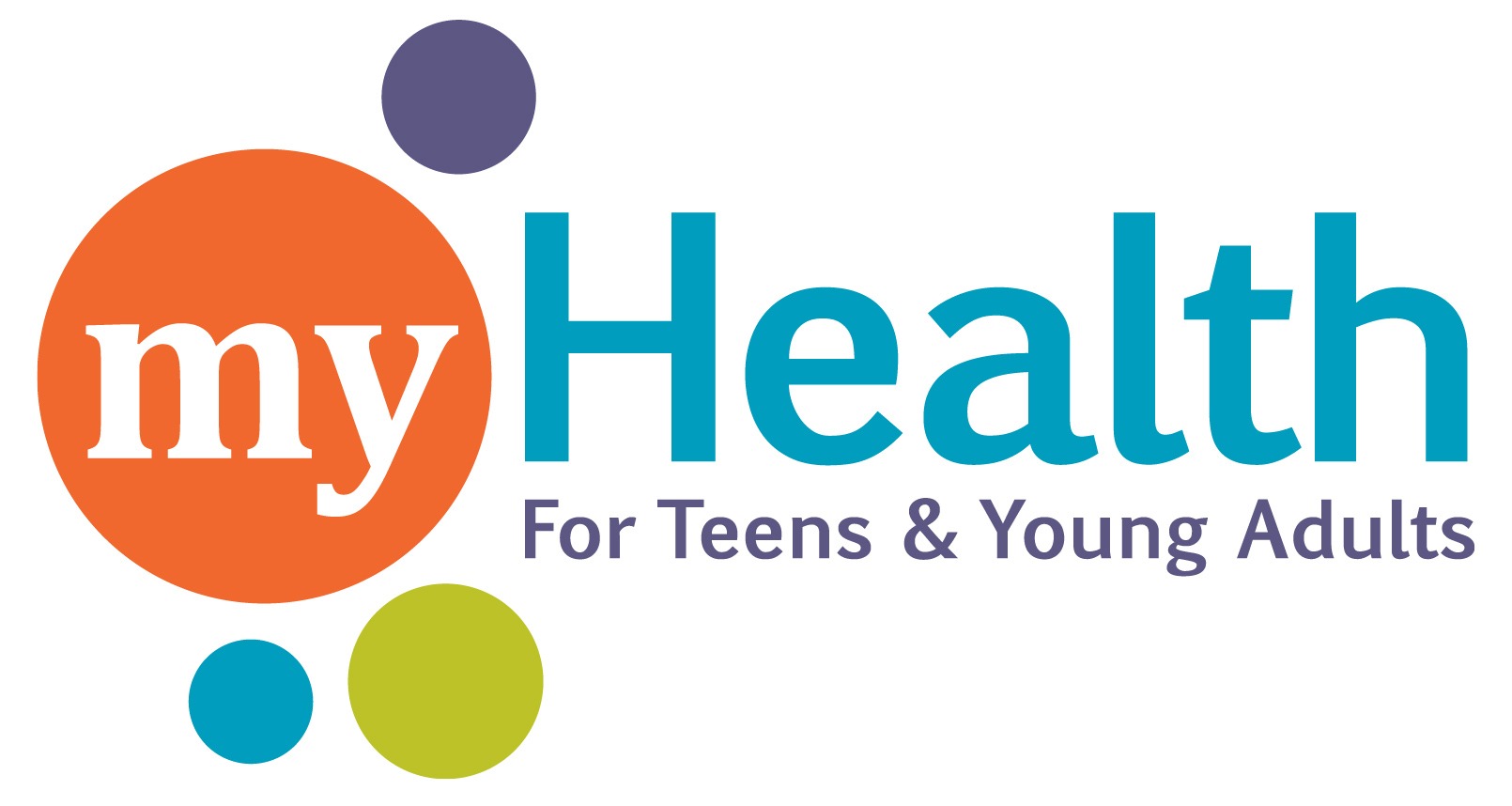There is no 100% effective method to prevent unwanted pregnancy other than not having sex. However, there are many very effective birth control options, including one that also offers protection against STIs. In addition, it’s important to know about certain methods that are not very useful.
Click on a contraception method to learn more!

I know, you’ve heard this before, but the only 100% effective way to prevent pregnancy is not having sex (also known as abstinence)… and the only 100% effective way to prevent STIs is not having sex. It may seem like everyone else is doing it, but that’s just not true. It is OK to say no to sex until you are ready, and it is also OK to decide not to continue having sex.
If you are planning to have sex, it’s essential to be safe about it and understand your birth control options.

Condoms can be made out of different materials like latex or polyurethane, and they come in all sorts of different textures, colors and sizes. It’s really important to make sure a condom is the proper size before using it to avoid breakage or slippage. Some condoms are lubricated, making the condom more slick and comfortable to use during sex. You can find them at most convenience, grocery, and drug stores, or anywhere you find toiletry and self-care products.
The best part? Condoms are easy to access, and they’re affordable... here at myHealth you can get them anytime for free!

Depo is a great option for those who don’t want to think about birth control every day or have trouble remembering to take their pill on time. You only have to stop into myHealth for the shot 4 times a year!
This form of birth control does not contain estrogen, which makes it a safer option for those who have migraine headaches, high blood pressure, smoke regularly, or have trouble with estrogen side effects.
The most common side effects are short-term irregular menstrual bleeding or spotting, no period at all, weight gain, increased appetite, depression and headaches. We recommend taking a daily calcium vitamin with Depo, since there’s a risk of bone-density loss over a long period of time.
Depo is a reliable form of birth control, but it does not protect you from Sexually Transmitted infections, so you should always use condoms for STI protection.

There are many kinds of birth control pills, all with varying combinations of 2 female hormones, estrogen and progesterone. These hormones stop you from releasing an egg every month, so you can’t get pregnant. You can talk with your provider about which type of birth control pill is right for you.
The pill is 92-99% effective, if correctly used, and it can make periods more regular, cramps less painful, improve acne and PMS, and help protect against uterine and ovarian cancer.
However, the pill does not protect against sexually transmitted infections or HIV. It can also cause irregular bleeding, breast tenderness, headaches, nausea or moodiness. Serious side effects are rare, but it’s still important to talk to your provider about your medical history. The pill does not protect you from STIs, so it’s recommended to use condoms with this method of birth control.

There are two different types of emergency contraception, and the type a person should take depends on their body mass index (BMI) and how long they waited to come in for it. The over-the-counter emergency contraception pill is available at drug stores and must be taken within 72 hours after unprotected sex. Ella, the prescription emergency contraception that we can prescribe you at the clinic can be taken up to 5 days after unprotected sex, but the sooner it’s taken, the more effective it is. Ella is also more effective for people with a higher BMI.
Emergency contraception is safe to use, and it may prevent an egg from being released or prevent the sperm and egg from meeting by thickening the mucus around a woman’s cervix. It may also work to thin the lining of the uterus so that an egg can’t implant. Contrary to popular belief, emergency contraception is not the abortion pill. If a person with a vagina takes it within a few days after unprotected sex but has already been impregnated, it will not work.

The ring contains two hormones, estrogen and progestin, that slowly go into the body through the skin in the vagina. These hormones tell the body not to ovulate, or release an egg. The ring works on a 4-week cycle, so a new ring is inserted once a month. It is kept in place for 3 weeks and then removed for 1 week, which is typically when you will get your period.
A person using the NuvaRing will need to be comfortable inserting and removing the ring themselves. This may seem a little awkward at first but becomes easier with practice. Your doctor or trained provider will walk you through the process of insertion.
Benefits of the NuvaRing include regular periods, shorter and lighter periods, less cramping, and only having to think about birth control once a month!
Most people do not experience many side effects of the ring, but some users may experience vaginal irritation, increased discharge, mild nausea and breast tenderness.
Most partners do not feel the ring during intercourse, in fact, studies found that 97% of both men and women could not feel the ring during sex.
The Nuva Ring does not protect you from sexually transmitted infections, so you should still use condoms.

Liletta works in three ways: it thickens cervical mucus to prevent sperm from entering the uterus, stops sperm from reaching an egg, and thins the uterine lining.
The device is inserted by a doctor or trained provider. You can expect to have period-like cramps for a few days following your appointment, as well as irregular bleeding or spotting for up to 6 months. However, most people who choose an IUD have no period at all by the end of the first year!
Liletta needs to be removed at the end of the 8 years by a doctor but can be removed sooner, if needed or desired. Fertility returns immediately after removal of the device.
Liletta does not protect from sexually transmitted infections like most other birth control methods, so we still recommend the use of condoms.

Nexplanon releases a steady, low dose of etonogestrel into your bloodstream and does not contain any estrogen. It prevents pregnancy by stopping the release of an egg from your ovary, thickening the mucus in your cervix to prevent a sperm from reaching an egg, and changing the lining of your uterus.
The average time to actually insert Nexplanon is under a minute, and you only need to keep a dressing on your arm for 24 hours. Your provider will make sure that you can feel the device under your arm, but others will not notice that you have Nexplanon unless you tell them!
Nexplanon can be easily removed after 3 years or at anytime you decide to remove it. The average removal procedure takes less than 4 minutes. A small incision is made in your arm to remove the device. Once removed, you may become pregnant as early as the first week after removal.
The most common side effect is unpredictable bleeding patterns for the first three to six months.
Nexplanon does not protect against HIV infection and STIs, so we still recommend using a condom to prevent these infections.

The patch sticks to your skin and gradually releases the hormones through the skin. Each patch contains 7 days of hormones. If you use TWIRLA, You will wear 1 patch each week for 3 weeks. You will not wear a patch during week 4. Your period should happen during your patch-free week.
When used properly, TWIRLA reduces risk of pregnancy by over 95%.
Like other hormonal methods of birth control, TWERLA does not protect from sexually transmitted infections (STIs).

Depo is a great option for those who don’t want to think about birth control every day or have trouble remembering to take their pill on time. You only have to stop into myHealth for the shot 4 times a year!
This form of birth control does not contain estrogen, which makes it a safer option for those who have migraine headaches, high blood pressure, smoke regularly, or have trouble with estrogen side effects.
The most common side effects are short-term irregular menstrual bleeding or spotting, no period at all, weight gain, increased appetite, depression and headaches. We recommend taking a daily calcium vitamin with Depo, since there’s a risk of bone-density loss over a long period of time.
Depo is a reliable form of birth control, but it does not protect you from Sexually Transmitted infections, so you should always use condoms for STI protection.

Nexplanon releases a steady, low dose of etonogestrel into your bloodstream and does not contain any estrogen. It prevents pregnancy by stopping the release of an egg from your ovary, thickening the mucus in your cervix to prevent a sperm from reaching an egg, and changing the lining of your uterus.
The average time to actually insert Nexplanon is under a minute, and you only need to keep a dressing on your arm for 24 hours. Your provider will make sure that you can feel the device under your arm, but others will not notice that you have Nexplanon unless you tell them!
Nexplanon can be easily removed after 3 years or at anytime you decide to remove it. The average removal procedure takes less than 4 minutes. A small incision is made in your arm to remove the device. Once removed, you may become pregnant as early as the first week after removal.
The most common side effect is unpredictable bleeding patterns for the first three to six months.
Nexplanon does not protect against HIV infection and STIs, so we still recommend using a condom to prevent these infections.

Liletta works in three ways: it thickens cervical mucus to prevent sperm from entering the uterus, stops sperm from reaching an egg, and thins the uterine lining.
The device is inserted by a doctor or trained provider. You can expect to have period-like cramps for a few days following your appointment, as well as irregular bleeding or spotting for up to 6 months. However, most people who choose an IUD have no period at all by the end of the first year!
Liletta needs to be removed at the end of the 8 years by a doctor but can be removed sooner, if needed or desired. Fertility returns immediately after removal of the device.
Liletta does not protect from sexually transmitted infections like most other birth control methods, so we still recommend the use of condoms.

The ring contains two hormones, estrogen and progestin, that slowly go into the body through the skin in the vagina. These hormones tell the body not to ovulate, or release an egg. The ring works on a 4-week cycle, so a new ring is inserted once a month. It is kept in place for 3 weeks and then removed for 1 week, which is typically when you will get your period.
A person using the NuvaRing will need to be comfortable inserting and removing the ring themselves. This may seem a little awkward at first but becomes easier with practice. Your doctor or trained provider will walk you through the process of insertion.
Benefits of the NuvaRing include regular periods, shorter and lighter periods, less cramping, and only having to think about birth control once a month!
Most people do not experience many side effects of the ring, but some users may experience vaginal irritation, increased discharge, mild nausea and breast tenderness.
Most partners do not feel the ring during intercourse, in fact, studies found that 97% of both men and women could not feel the ring during sex.
The Nuva Ring does not protect you from sexually transmitted infections, so you should still use condoms.

The patch sticks to your skin and gradually releases the hormones through the skin. Each patch contains 7 days of hormones. If you use TWIRLA, You will wear 1 patch each week for 3 weeks. You will not wear a patch during week 4. Your period should happen during your patch-free week.
When used properly, TWIRLA reduces risk of pregnancy by over 95%.
Like other hormonal methods of birth control, TWERLA does not protect from sexually transmitted infections (STIs).

Depo is a great option for those who don’t want to think about birth control every day or have trouble remembering to take their pill on time. You only have to stop into myHealth for the shot 4 times a year!
This form of birth control does not contain estrogen, which makes it a safer option for those who have migraine headaches, high blood pressure, smoke regularly, or have trouble with estrogen side effects.
The most common side effects are short-term irregular menstrual bleeding or spotting, no period at all, weight gain, increased appetite, depression and headaches. We recommend taking a daily calcium vitamin with Depo, since there’s a risk of bone-density loss over a long period of time.
Depo is a reliable form of birth control, but it does not protect you from Sexually Transmitted infections, so you should always use condoms for STI protection.

Nexplanon releases a steady, low dose of etonogestrel into your bloodstream and does not contain any estrogen. It prevents pregnancy by stopping the release of an egg from your ovary, thickening the mucus in your cervix to prevent a sperm from reaching an egg, and changing the lining of your uterus.
The average time to actually insert Nexplanon is under a minute, and you only need to keep a dressing on your arm for 24 hours. Your provider will make sure that you can feel the device under your arm, but others will not notice that you have Nexplanon unless you tell them!
Nexplanon can be easily removed after 3 years or at anytime you decide to remove it. The average removal procedure takes less than 4 minutes. A small incision is made in your arm to remove the device. Once removed, you may become pregnant as early as the first week after removal.
The most common side effect is unpredictable bleeding patterns for the first three to six months.
Nexplanon does not protect against HIV infection and STIs, so we still recommend using a condom to prevent these infections.

Liletta works in three ways: it thickens cervical mucus to prevent sperm from entering the uterus, stops sperm from reaching an egg, and thins the uterine lining.
The device is inserted by a doctor or trained provider. You can expect to have period-like cramps for a few days following your appointment, as well as irregular bleeding or spotting for up to 6 months. However, most people who choose an IUD have no period at all by the end of the first year!
Liletta needs to be removed at the end of the 6 years by a doctor but can be removed sooner, if needed or desired. Fertility returns immediately after removal of the device.
Liletta does not protect from sexually transmitted infections like most other birth control methods, so we still recommend the use of condoms.

The ring contains two hormones, estrogen and progestin, that slowly go into the body through the skin in the vagina. These hormones tell the body not to ovulate, or release an egg. The ring works on a 4-week cycle, so a new ring is inserted once a month. It is kept in place for 3 weeks and then removed for 1 week, which is typically when you will get your period.
A person using the NuvaRing will need to be comfortable inserting and removing the ring themselves. This may seem a little awkward at first but becomes easier with practice. Your doctor or trained provider will walk you through the process of insertion.
Benefits of the NuvaRing include regular periods, shorter and lighter periods, less cramping, and only having to think about birth control once a month!
Most people do not experience many side effects of the ring, but some users may experience vaginal irritation, increased discharge, mild nausea and breast tenderness.
Most partners do not feel the ring during intercourse, in fact, studies found that 97% of both men and women could not feel the ring during sex.
The Nuva Ring does not protect you from sexually transmitted infections, so you should still use condoms.

There are many kinds of birth control pills, all with varying combinations of 2 female hormones, estrogen and progesterone. These hormones stop you from releasing an egg every month, so you can’t get pregnant. You can talk with your provider about which type of birth control pill is right for you.
The pill is 92-99% effective, if correctly used, and it can make periods more regular, cramps less painful, improve acne and PMS, and help protect against uterine and ovarian cancer.
However, the pill does not protect against sexually transmitted infections or HIV. It can also cause irregular bleeding, breast tenderness, headaches, nausea or moodiness. Serious side effects are rare, but it’s still important to talk to your provider about your medical history. The pill does not protect you from STIs, so it’s recommended to use condoms with this method of birth control.

I know, you’ve heard this before, but the only 100% effective way to prevent pregnancy is not having sex (also known as abstinence)… and the only 100% effective way to prevent STIs is not having sex. It may seem like everyone else is doing it, but that’s just not true. It is OK to say no to sex until you are ready, and it is also OK to decide not to continue having sex.
If you are planning to have sex, it’s essential to be safe about it and understand your birth control options.

Condoms can be made out of different materials like latex or polyurethane, and they come in all sorts of different textures, colors and sizes. It’s really important to make sure a condom is the proper size before using it to avoid breakage or slippage. Some condoms are lubricated, making the condom more slick and comfortable to use during sex. You can find them at most convenience, grocery, and drug stores, or anywhere you find toiletry and self-care products.
The best part? Condoms are easy to access, and they’re affordable... here at myHealth you can get them anytime for free!

I know, you’ve heard this before, but the only 100% effective way to prevent pregnancy is not having sex (also known as abstinence)… and the only 100% effective way to prevent STIs is not having sex. It may seem like everyone else is doing it, but that’s just not true. It is OK to say no to sex until you are ready, and it is also OK to decide not to continue having sex.
If you are planning to have sex, it’s essential to be safe about it and understand your birth control options.

Condoms can be made out of different materials like latex or polyurethane, and they come in all sorts of different textures, colors and sizes. It’s really important to make sure a condom is the proper size before using it to avoid breakage or slippage. Some condoms are lubricated, making the condom more slick and comfortable to use during sex. You can find them at most convenience, grocery, and drug stores, or anywhere you find toiletry and self-care products.
The best part? Condoms are easy to access, and they’re affordable... here at myHealth you can get them anytime for free!

Liletta works in three ways: it thickens cervical mucus to prevent sperm from entering the uterus, stops sperm from reaching an egg, and thins the uterine lining.
The device is inserted by a doctor or trained provider. You can expect to have period-like cramps for a few days following your appointment, as well as irregular bleeding or spotting for up to 6 months. However, most people who choose an IUD have no period at all by the end of the first year!
Liletta needs to be removed at the end of the 8 years by a doctor but can be removed sooner, if needed or desired. Fertility returns immediately after removal of the device.
Liletta does not protect from sexually transmitted infections like most other birth control methods, so we still recommend the use of condoms.

Nexplanon releases a steady, low dose of etonogestrel into your bloodstream and does not contain any estrogen. It prevents pregnancy by stopping the release of an egg from your ovary, thickening the mucus in your cervix to prevent a sperm from reaching an egg, and changing the lining of your uterus.
The average time to actually insert Nexplanon is under a minute, and you only need to keep a dressing on your arm for 24 hours. Your provider will make sure that you can feel the device under your arm, but others will not notice that you have Nexplanon unless you tell them!
Nexplanon can be easily removed after 3 years or at anytime you decide to remove it. The average removal procedure takes less than 4 minutes. A small incision is made in your arm to remove the device. Once removed, you may become pregnant as early as the first week after removal.
The most common side effect is unpredictable bleeding patterns for the first three to six months.
Nexplanon does not protect against HIV infection and STIs, so we still recommend using a condom to prevent these infections.

There are many kinds of birth control pills, all with varying combinations of 2 female hormones, estrogen and progesterone. These hormones stop you from releasing an egg every month, so you can’t get pregnant. You can talk with your provider about which type of birth control pill is right for you.
The pill is 92-99% effective, if correctly used, and it can make periods more regular, cramps less painful, improve acne and PMS, and help protect against uterine and ovarian cancer.
However, the pill does not protect against sexually transmitted infections or HIV. It can also cause irregular bleeding, breast tenderness, headaches, nausea or moodiness. Serious side effects are rare, but it’s still important to talk to your provider about your medical history. The pill does not protect you from STIs, so it’s recommended to use condoms with this method of birth control.

I know, you’ve heard this before, but the only 100% effective way to prevent pregnancy is not having sex (also known as abstinence)… and the only 100% effective way to prevent STIs is not having sex. It may seem like everyone else is doing it, but that’s just not true. It is OK to say no to sex until you are ready, and it is also OK to decide not to continue having sex.
If you are planning to have sex, it’s essential to be safe about it and understand your birth control options.

Condoms can be made out of different materials like latex or polyurethane, and they come in all sorts of different textures, colors and sizes. It’s really important to make sure a condom is the proper size before using it to avoid breakage or slippage. Some condoms are lubricated, making the condom more slick and comfortable to use during sex. You can find them at most convenience, grocery, and drug stores, or anywhere you find toiletry and self-care products.
The best part? Condoms are easy to access, and they’re affordable... here at myHealth you can get them anytime for free!

There are two different types of emergency contraception, and the type a person should take depends on their body mass index and how long they waited to come in for it. The over-the-counter emergency contraception pill is available at drug stores and must be taken within 72 hours after unprotected sex. Ella, the prescription emergency contraception that we can prescribe you at the clinic can be taken up to 5 days after unprotected sex, but the sooner it’s taken, the more effective it is.
Emergency contraception is safe to use, and it may prevent an egg from being released or prevent the sperm and egg from meeting by thickening the mucus around a woman’s cervix. It may also work to thin the lining of the uterus so that an egg can’t implant. Contrary to popular belief, emergency contraception is not the abortion pill. If a female takes it within a few days after unprotected sex but has already been impregnated, it will not work.
